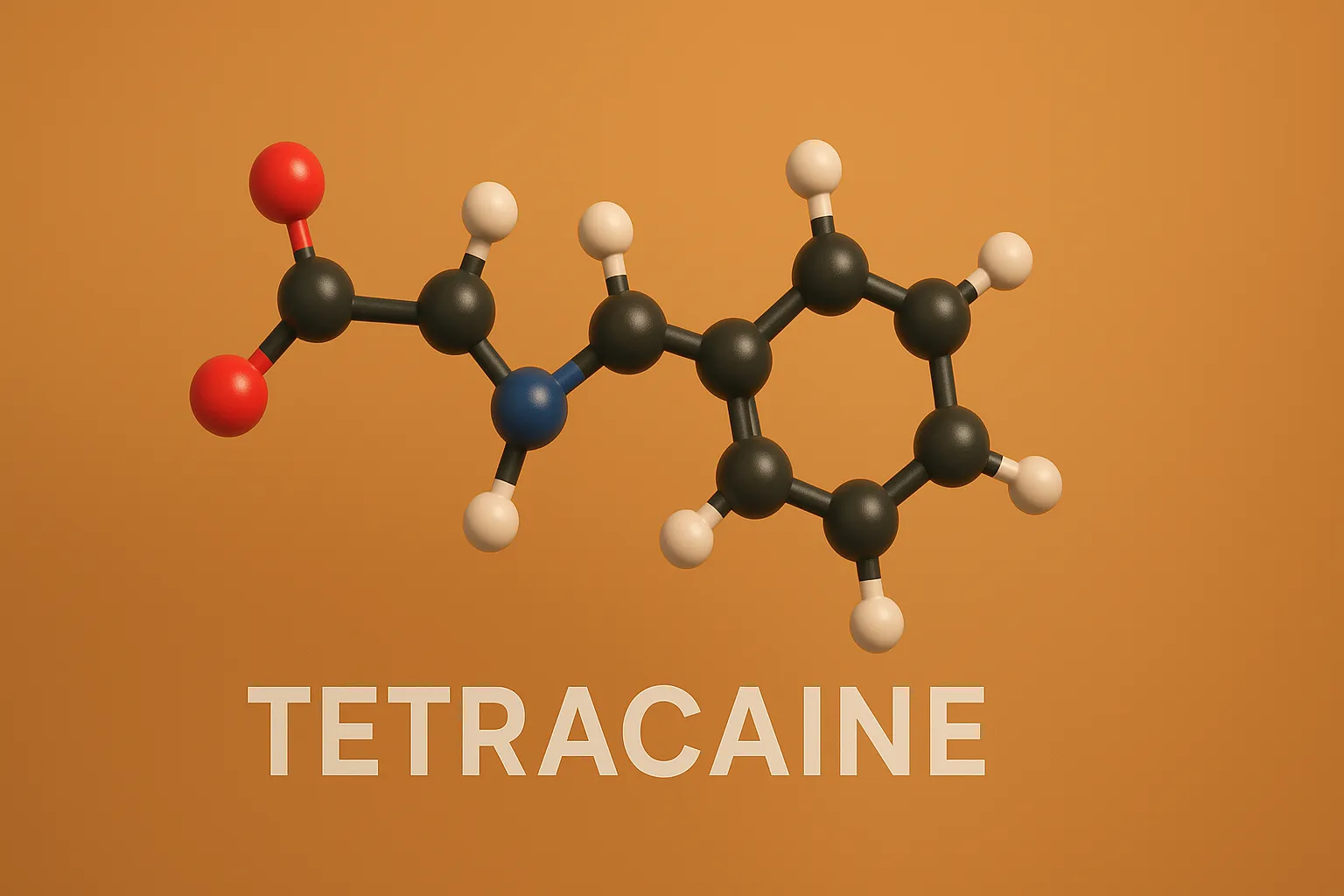Tetracaine is a potent ester local anesthetic used for spinal and ophthalmic anesthesia by blocking nerve signals.
Structure of Tetracaine
- It is a potent amino benzoic acid derivative with a butyl ester group, providing long-lasting local anesthetic effects.
- Chemical Formula: C₁₂H₂₉N₃O₂

Mode of Action
- Sodium Channel Blockade: Inhibits voltage-gated sodium channels, preventing nerve impulse conduction.
- Membrane Stabilization: Enhances membrane stability, reducing nerve excitability.
Uses
- Topical Anesthesia: Applied in ophthalmic procedures, dermatological treatments, and mucosal numbing.
- Local Anesthesia: Used in dental procedures, minor surgeries, and epidural anesthesia.
- Infiltration Anesthesia: Injected to provide prolonged numbness in specific areas during medical procedures.
Side Effects of Tetracaine
- Local Irritation: Can cause burning, redness, or swelling at the application site.
- Systemic Toxicity: CNS excitation or depression and cardiovascular disturbances with high doses.

